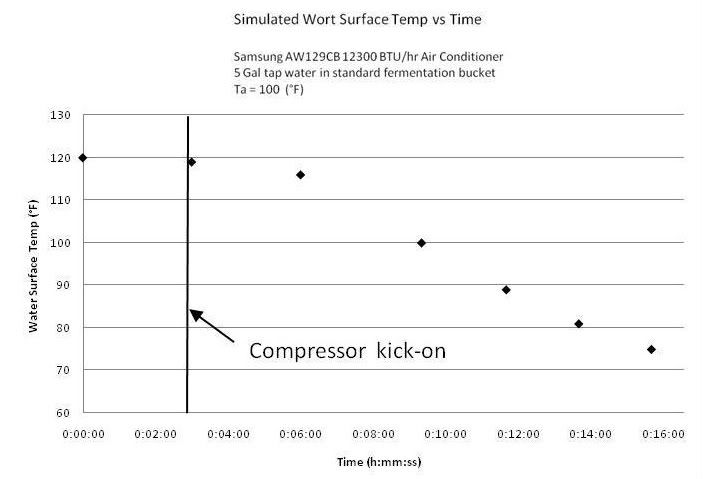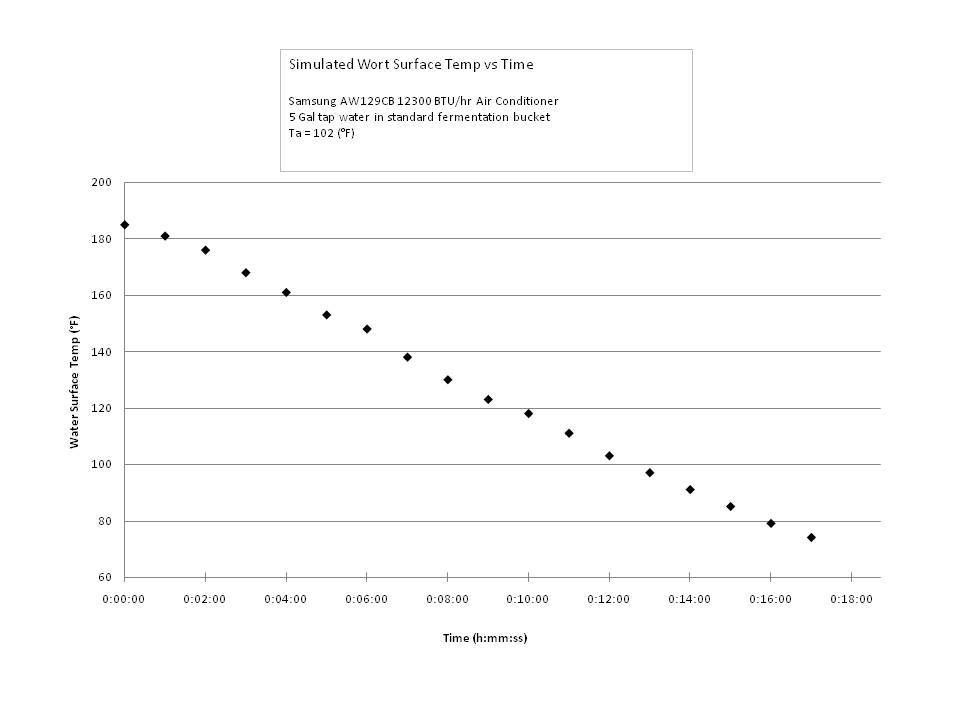In a departure from pretty much everyone's (really good and obviously common sense) advice, and as a tribute to scientific method over simplicity, I've decided to test my A/C device. My end goal is to minimize water usage in the brewing process.
The A/C unit itself is a Samsung 12,300 BTU/hr unit, so more than double the output of Virtous's bar napkin calculations
Today was the first test. I started with just hot tap water to test the ability of my A/C unit to handle the cooling load. Technically, I should have had 5 gallons of water exposed to just atmospheric cooling as a control group, but I ran out of buckets.
Here's a quick look at the data from the test:
Starting at a water temp of 120F and an outside air temp of 100F, the A/C unit was able to cool 5 gal of water down to 75F in just under 16 minutes.
That's not the whole story, though. Here's some other observations I made:
-The A/C unit didn't seem to be under stress or strain during the test.
-The simple brewing thermometer I was using remained static and recorded the temp in the upper layers of my simulated wort. I put my hand in the bucket after the test was over and I estimate the water at the bottom of the bucket to be at least 20 degrees cooler than the top layer at the end of my 16 min cooling period
-The compressor took about 2 minutes to kick-on from the time that I pressed the power button on the A/C unit and the cooling rate didn't start to ramp up for another minute or two.
-Finally, only about 60% of the cooling coil surface is exposed to my simulated wort in a standard fermentation bucket (see pic).
A long term recommendation is to switch to a fermenter that is taller and has a rectangular cross-sectional area so that more of my simulated wort will be exposed to the cooling coils.
For Test #2, I will attempt to cool boiling water down to a pitchable temp (75F again). I will also continuously stir my simulated wort in order to achieve more uniform cooling. If you're super-dorky, I will also be determining if this system can be modeled by Newton's Law of Cooling and determining a cooling coefficient.
Stay tuned for Test #2.






































![Craft A Brew - Safale S-04 Dry Yeast - Fermentis - English Ale Dry Yeast - For English and American Ales and Hard Apple Ciders - Ingredients for Home Brewing - Beer Making Supplies - [1 Pack]](https://m.media-amazon.com/images/I/41fVGNh6JfL._SL500_.jpg)











